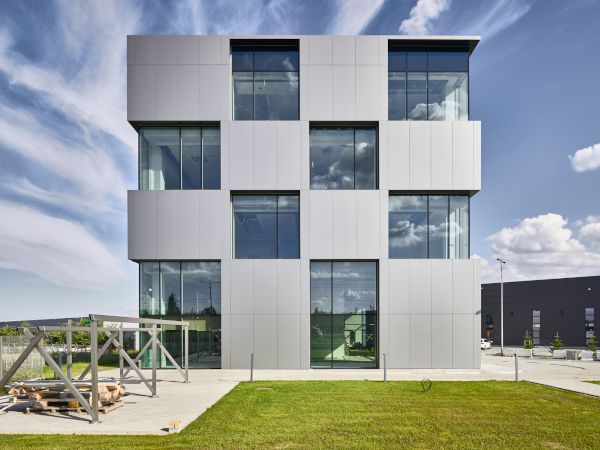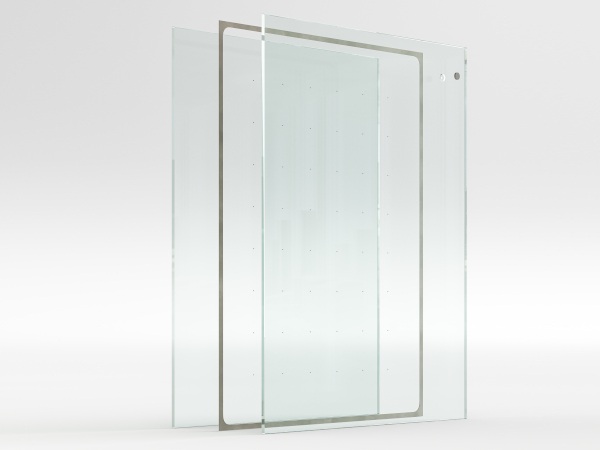Date: 7 June 2006
Set among mature oaks and maples on Monroe Street, its protective chrysalis is gradually being shed as panels are removed to reveal ultra-clear glass walls.Emerging is a low-slung, transparent building, compact and graceful.But there's still plenty to do.Between now and the grand opening in August, glass doors will be hung; interior climate, so critical to works of art, will be monitored; light fixtures and security and fire systems will be installed.The 18th and final shipment of glass panels that were made in Germany and shipped to China to be sized, laminated, and curved, arrived two weeks ago and will be installed in the coming weeks.Exhibit cases are being assembled.The museum's 7,000 glass pieces are packed and ready for the huge and potentially risky task of transfer to the new building next month.The glass-making furnaces have been fired up and, to everyone's relief, proven to work.By September, the fiery glow will be visible from the street.
The furnaces, which reach 2,400 degrees, are among the things that make this $30 million facility unique: It is both a museum and a place to create glass. While visitors admire art glass crafted throughout the last 4,000 years, they'll be able to watch the mesmerizing process of glass being made by masters and students.
That's a sweet juxtaposition, but a real challenge in terms of controlling humidity, sound, and high temperatures generated in the hot shops, and the nearby galleries, which require strict climate control, said Florian Idenburg, associate in charge of U.S. projects for SANAA, Ltd., the Glass Pavilion's Japanese architects.
Read the entire news on the source link below.


















Add new comment